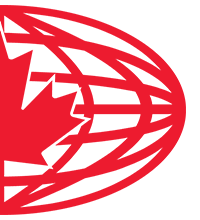Peter, Paul and Mary’s wonderful song about “flowers” was the first thing that came to mind. Snowbirds are the most resilient of people; they have had to be, to deal with the ups and downs of cross-border living for many years. But this year appears to be different!
No longer could snowbirds cut out a few fancy meals, reduce their side trips and still maintain their snowbird lifestyle. The Canadian dollar’s value had collapsed to levels it had not seen for the past 10 years. For most snowbirds, the Canadian dollar’s gradual rise since January 2002, from a low of $0.63, had matched or even beaten the inflation rate in the United States. The snowbird lifestyle became easier every year. There was a brief dollar retreat back to $0.80 that affected the 2008/09 travel season but generally, during the surrounding years, they had gotten used to a $0.95 dollar value. The wise ones, who were able to time their purchases, even got dollar for dollar, and better.
The second retreat to $.80 began at the beginning of the 2014/15 travel season and took many snowbirds by surprise. We believe that it was a direct result of the collapsing oil prices, which seem to follow trading patterns similar to the Canadian dollar. Their finances were severely stressed from what they had budgeted, while they were away! Of interest is the fact that the 2014/15 travel season was perhaps the worst claims season, ever. Multimillion-dollar losses by insurers were very common. Did the financial stress caused by the dollar’s retreat contribute to the dramatic increase in claims? Probably. Snowbirds are on fixed incomes and the pressures on their lifestyle were, and are, enormous. The interest and dividend revenue of fixed-income investments are at multi-year lows and a 1% GIC rate won’t support any senior, let alone snowbirds who have also been whipsawed by the Canadian dollar’s decline.
Did I mention the costs of travel insurance? For the 2014/15 travel year, rates increased marginally across the board. These increases were manageable for most snowbirds unless they had to move to a higher age banded rate. (Every year, 20% do shift age bands.) But the insurers got caught just like the snowbirds. Their prices were set at approximately a $0.90 dollar but, when the claims came rolling in, they had to pay those claims based on an $0.80 dollar. So, as an insurer with a $100 million travel book, you just lost $10-15 million dollars and perhaps more. Price increases for this upcoming travel season were justifiably dramatic, with insurers chasing the dollar down by jamming premium rates up. In some cases, several rate increases were levied in a short period of months. The poor snowbirds – dramatic increases in insurance costs, rental and lifestyle expenses up by close to 30% and a fixed Canadian-dollar income to try and offset the new “normal.”
The statistics are telling. Medipac’s consistent growth of 8-12% in the number of policies written has stalled. This is by policy count, of course, as insurance revenue has still increased due to the premium increases necessary to counteract the U.S.-dollar strength. The Conference Board of Canada statistics show that, between January and August 2015, there were one million fewer overnight trips to the United States; many of these were snowbird trips. During the same period, overnight automobile trips to the U.S. dropped by 8.5%. These are staggering numbers.
Medipac has gone from an average annual increase in snowbird policies of more than 10% to a decrease of 4% this year, for the upcoming travel season. That’s a 14% shift – staggering, indeed! Our phone staff debriefings show an abundance of calls looking to reduce their annual trip length and many looking to increase their deductibles from last year, all to save money, of course. For every snowbird who has increased his or her trip length, there are three who are being forced to go for shorter periods of time.
Texas has had the largest percentage reduction in trips and trip lengths, followed by Florida. Not surprisingly, Arizona travel has increased and California travel is up by even more. These are generally the upscale markets and they do not appear to have been affected by the dollar’s decline, higher insurance costs or our insignificant interest rates.
But, as I have come to know over the years, snowbirds are resilient. They will adapt to the new “normal” and they will continue their lifestyle for years to come. Well, there are a few exceptions. These few are the snowbirds who purchased a home at the bottom of the U.S. housing market and are now sitting on 30-50% gains, before applying the dollar exchange rate. After conversion, they have come close to doubling their money and some are deciding to sell their property. My guess is that they will once again become snowbirds, but as renters, and they will use their newfound money to support an even better lifestyle. Party on!
